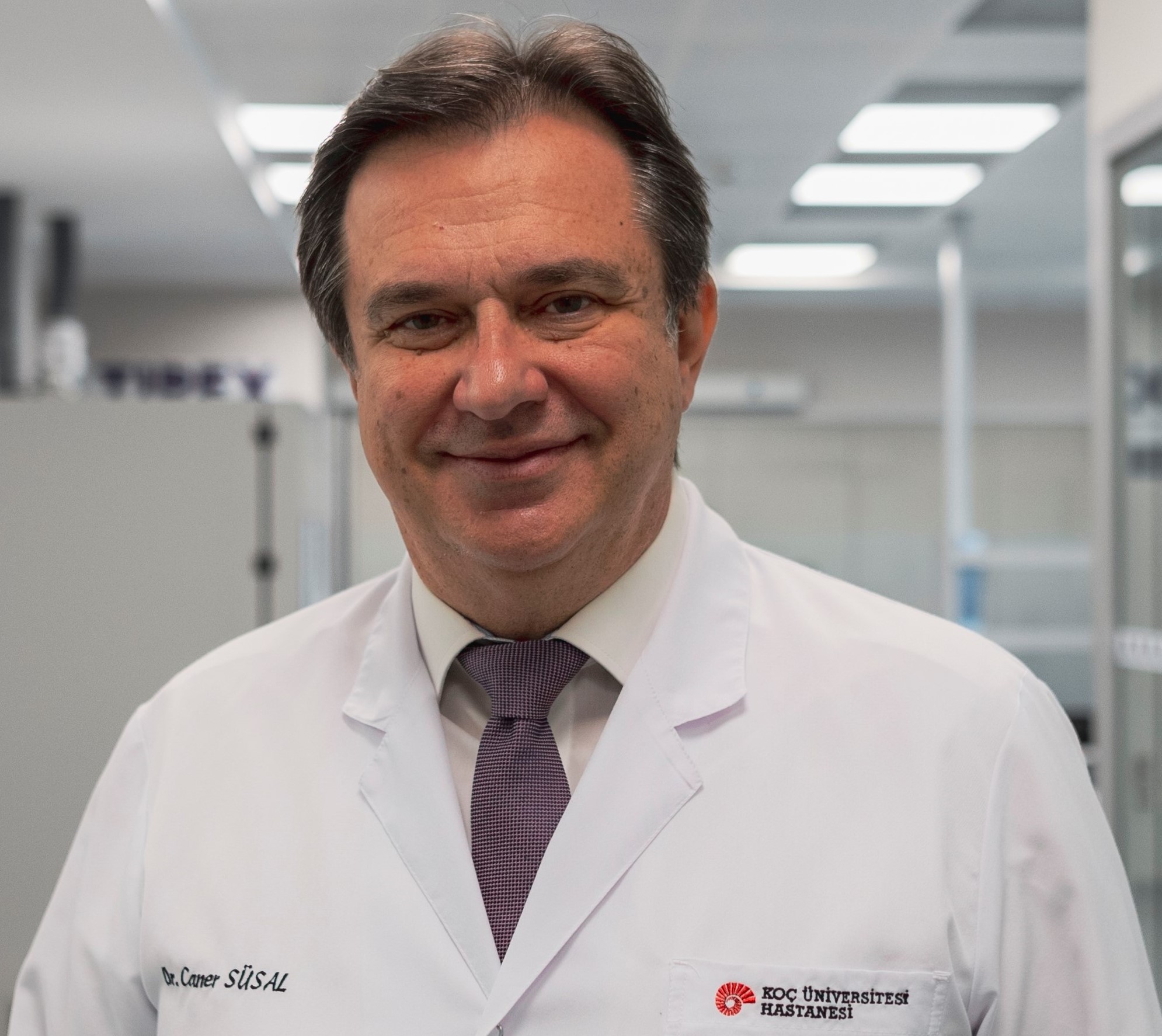
Dr. Caner Süsal graduated from Heidelberg University School of Medicine in 1986. He continued his career in the field of transplantation immunology at the same institution after his graduation until September 2021. He became an Associate Professor of Immunology in 1999 and a Professor in 2005. He was appointed as an Academic Director in 2012.
Dr. Süsal received many scientific awards and held several leadership positions in the fields of organ transplantation and transplantation immunology. He served on the executive boards of various national and international societies, including Eurotransplant, was the President of the German Society for Immunogenetics, and coordinated the Collaborative Transplant Study in which more than 400 transplant centres from 42 countries have participated.
Dr. Süsal authored or co-authored 250 peer-reviewed articles and published in high-ranked journals, such as Nat Med, BMJ, N Engl J Med, J Clin Invest, Blood, J Immunol, Am J Transplant, and Nat Rev Nephrol. His research interests cover all aspects of organ transplantation and transplantation immunology including transplantation of highly immunized patients, transplantation of organs from expanded criteria donors, induction of unresponsiveness to allografts, pre- and post-transplant risk estimation, matching of organ donor/recipient pairs at epitope level, and identification of biomarkers that reflect the balance between the effector and regulatory components of the alloimmune response.
In September 2021, Dr. Süsal was appointed as the Director of the EU-funded Transplant Immunology Research Center of Excellence TIREX at Koç University in Istanbul. He has an adjunct professorship also at the Medical School of Heidelberg University.
Tacrolimus metabolism and kidney transplant outcomes
Caner Süsal1,2, Bernd Döhler1, Erol Demir2, Walaa Ibrahim3, Medhat Askar4,5.
1Institute of Immunology, Heidelberg University Hospital, Heidelberg, Germany; 2Transplant Immunology Research Center of Excellence, Koç University, Istanbul, Turkey; 3Department of Internal Medicine&Nephrology, Assuit University, Assuit, Egypt; 4QU Health and College of Medicine, Qatar University, Doha, Qatar; 5Transplant Immunology, Baylor University Medical Center, Dallas, TX, United States
Introduction: Tacrolimus metabolism as measured by the ratio between trough concentration and dose of tacrolimus (CDR) was identified in single center studies as a risk factor for impaired renal function after kidney transplantation. We analyzed the association of tacrolimus metabolism at year one with the clinical outcomes during the second and third post-transplant years in a multicenter study of 21,865 adult kidney transplant recipients reported to the Collaborative Transplant Study. Pharmacogenomic and other factors associated with tacrolimus metabolism were also investigated.
Methods: The impact of 1-year CDR (day*10–3/L) on overall and death-censored graft failure and mortality was analyzed by Kaplan Meier estimates and multivariable Cox regression. CYP3A4 and CYP3A5 genotyping was performed in a subgroup of 1,257 kidney-only recipients with available DNA sample and known 1-year body weight. Factors associated with a low CDR at year one, as a measure of high metabolism, were studied by multiple logistic regression.
Results: The risk of overall graft failure increased gradually starting at CDR values below 1.05 and approximately doubled in patients with a very low CDR of <0.58 (P<0.001). The impact of low CDR <1.05 on death-censored graft failure was stronger than on patient mortality. The influence of a low CDR on mortality became apparent at values below 0.78, primarily attributable to deaths caused by infection. African American race, female sex, and no use of mycophenolate were significantly associated with a higher risk of a low CDR of <1.05 (P<0.001 for all). In the subgroup analysis, the CYP3A5*1A genotype correlated significantly with a low CDR (r=–0.42, P<0.001) and was associated with an 11-fold higher risk of having a low CDR.
Conclusion: Identification of high metabolizers with a low CDR could be a strategy to improve graft survival, for example, by optimizing the tacrolimus formulation.
Caner Süsal and the TIREX project are supported by the European Union’s Horizon 2020 Research and Innovation Programme (grant no. 952512).. We thank the transplant registries Eurotransplant, Italian Centro Nazionale Trapianti, Organització Catalana de Trasplantaments, Nederlandse Transplantatie Stichting, and UK Transplant for collaboration and data exchange with CTS and gratefully acknowledge the generous support of the transplantation centers or hospitals that provided data for this study to CTS. .
[1] Kidney Transplantation
[2] Tacrolimus Metabolism
[3] Immunosuppression
[4] Mortality
[5] CYP3A Genotyping
[6] Transplant Outcomes
[7] CD Ratio
